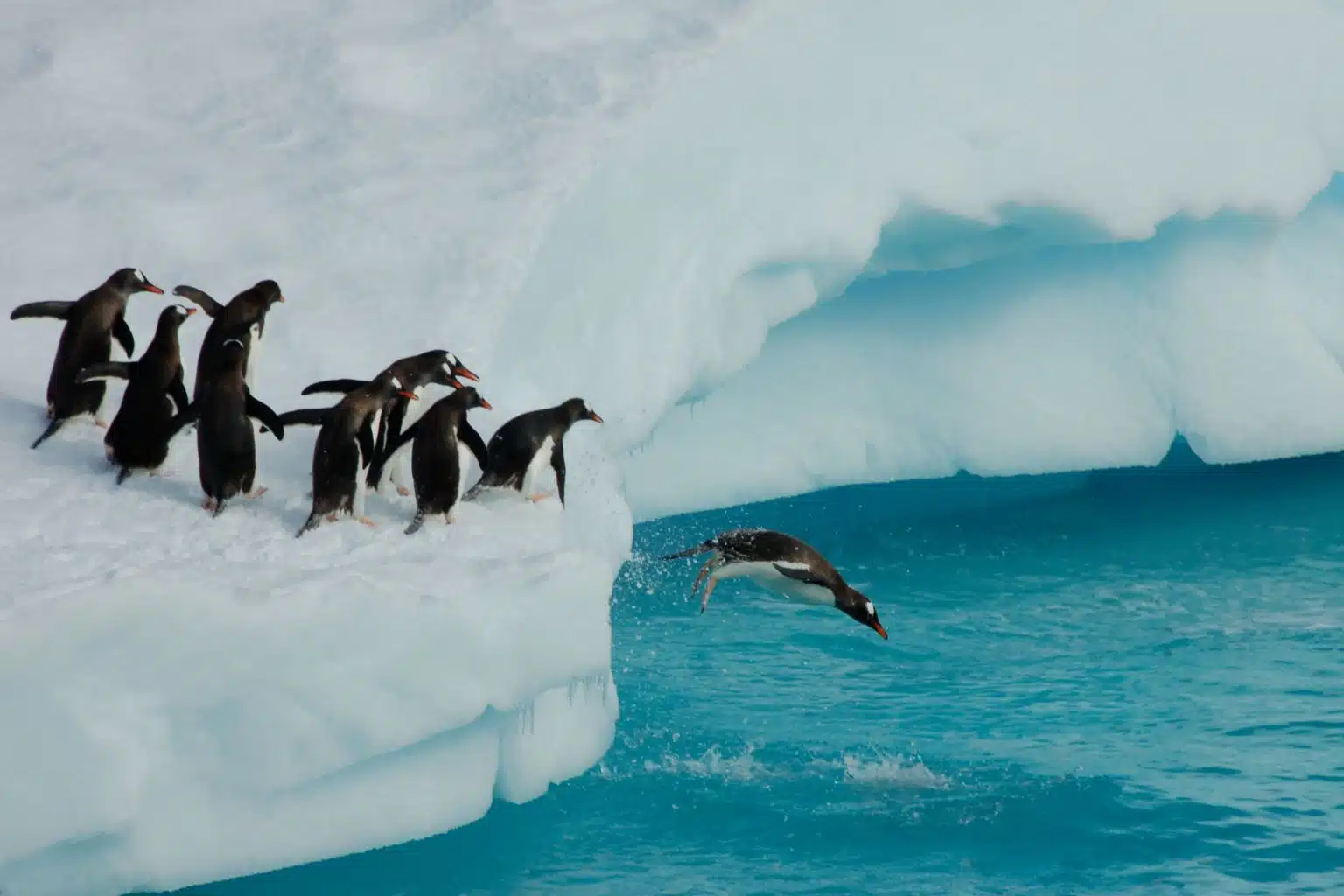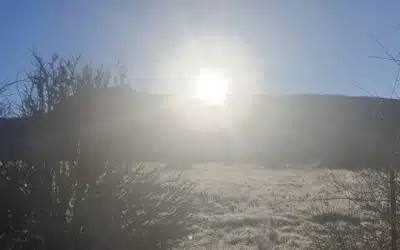Iceberg

Written By Maréva Bernard
Blog | Dzogchen philosophy | General Introduction to Dzogchen | Reflections on life
Mareva takes us on an exploration of an iceberg, majestic both above and below the water and of the same nature as the ocean.
Series: The Summer of the Ocean
Iceberg
The iceberg floats in the middle of the ocean. A giant ice cube, an ice sculpture, an object as majestic as it is ephemeral.
Above the water’s surface, the sun’s rays reflect on its white, harmoniously shaped mass. Below, its white color shifts to blue, its mass spreads out and plunges into the depths. It is immense and blends into the ocean. Water within water.
The emerged part seems autonomous. It stands out against the sky and we can trace its contours. It is the first thing we see when we arrive by boat: a surface for penguins, a mooring place for the zodiac, an object that floats.
But when the water becomes calm, we realize that the iceberg sinks deep and exists as much below the water as above it. Our curiosity drives us to explore its entirety. So we dive deeper and pass beneath the surface.
“Icebergs and oceans are manifestations of the same water, just as our lives are manifestations of the same nature of the mind, without beginning or end, without existence or non-existence.”
The submerged mass is much larger than what we had observed. The ten percent visible hides the ninety percent that makes it float.
When it comes into contact with water, its contours become less sharp. The iceberg melts continuously, more or less quickly and more or less evenly, but without interruption. It becomes clear that its base is of the same nature as the ocean.
If the underside is, then so is the top.
Through constant melting, the balance shifts, causing the iceberg to flip over. The underside becomes the top, and the top becomes the underside. It continues to melt and overturns again. Again and again. Within a few days to a few months, the iceberg will have completely disappeared.
When the water from the iceberg joins the ocean, it will evaporate, form clouds, snow, a new glacier, which will release new icebergs. The ocean is both source and result, base and fruit.
Such is the cycle of water and that of our lives.
Our lifes resemble this visible surface. Our sensations, thoughts, and emotions seem to be a solid and coherent whole. Our perceptions define a beginning and an end.
With a little practice, as Dzogchen suggests, the practitioner’s mind becomes calmer and glimpses its depths. The space of recurring tendencies then appears; those that characterize the pleasant, the unpleasant, and the neutral; those that govern birth, death, and becoming; those that govern gravity and wind. Then a space and time that cannot be measured are unfold.
This is the experience of the ocean depths.
Though Iit seems different on the surface, like an iceberg that flips over, the vision of the oceanic depths eventually merges with daily life. Then the difference diminishes. In fact, it has never existed.
Our existence seems immutable, yet it discreetly melts away, centiliter by centiliter, under the sun of passing days.
Icebergs and oceans are manifestations of the same water, just as our lives are manifestations of the same nature of the mind, without beginning or end, without existence or non-existence.
At the moment of death, our iceberg has naturally melted.
Water has merged with water.
The cycle can now end… or continue.
More Posts
A Garland of Light
In “A Garland of Light”, Johanne talks about the way the lineage of the Great Perfection is passed on, since its beginning.
Stories When the Light Fades
In “Stories When the Light Fades”, Mila Khyentse recalls some of his Master’s Jack-o’-lantern stories told at night.
The ground (gzhi)
This article is the first in a new category designed to provide a better understanding of the essential words and concepts of Dzogchen.




